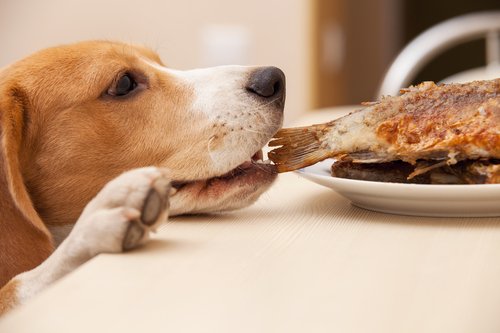Raised Food Bowls for Dogs: Yes or No?

When you adopt a dog and take him home, one of the first things you wonder is whether raised food bowls are a good idea or whether they’re better on the ground. Well, we’ll answer that question for you today, so read on.
The Advantages of Raised Food Bowls for Dogs
Many experts recommend the use of raised food bowls for several reasons:
- Cleanliness. When dogs drink, and also when they eat, they tend to raise their heads to help send the food to their stomach. So when you place your dog’s food bowl on the floor, food and especially water that doesn’t make it into his mouth will fall to the floor. The water that spills around their bowl also creates an ideal home for bacteria and mold.
- Arthritis. Food bowls on the floor can be uncomfortable for dogs with muscle tension or back problems. They may have trouble bending over to eat.
- If a dog is older or is sick, they’ll have less of an appetite at mealtime if they have a hard time eating. The best option in this scenario is a raised food bowl.
- Some dogs have a problem called megaesophagus (also known as esophageal dilatation). The condition makes the esophagus become large and flaccid. Instead of food going directly to their stomach, it gets”trapped” in their esophagus. Therefore, raised food bowls can help the food make it to the dog’s stomach.
Shopping for Raised Food Bowls for Dogs
The raised food bowl that you choose depends on several variables. On the one hand, you must consider the size and physical characteristics of the dog in question. On the other hand, you must take into account the size of the room, the available space, the material of the food bowl, and other aspects.
A simple guideline to follow is this: large dogs need large food bowls, and small dogs need smaller bowls.
To choose the ideal raised food bowl for your dog, the first thing you can do is measure his height. So what will you use a reference? Measure the highest point of your dog’s shoulder blades.
Different Types of Raised Food Bowls for Dogs
Food food bowls that are cone-shaped, for example, help dogs keep their long ears out of their food and water. With some dog breeds, these feeders can be very useful.
Shallow Food Bowls
Shallow food bowls are suitable for dogs with flatter snouts, as well as for puppies. The shallowness helps them reach the food easily, preventing tension from building up in their throats.
Deep Food Bowls
Deep food bowls are designed for dogs with long snouts. By using a deeper, raised food bowl, your dog will have more space for their nose and mouth, which will make it much easier to reach the food.
Food Bowls for Fast Eaters
Food bowl manufacturers have also created varieties for dogs that eat too quickly. Normally, these bowls have barriers inside of them that hinder access to the food, which in turn causes the dog to eat more slowly.
The main advantage of food bowls designed for fast eaters is that they’ll absorb nutrients better and digest the food more easily. They’re usually bowls with raised upper edges and a lower edge that is protected with some sort of non-slip material.
Automatic Food Dispensers
Technology is advancing everywhere, and food bowls for pets are no exception. The main purpose of automatic food dispensers is so that you can program your dog’s feeding times. This way, when you’re away, they can eat a pre-determined amount of food at the time of your choosing.
Different Food Bowl Materials

Stainless steel is the best option for food and water bowls. The material is anti-corrosive and does not release harmful particles. As far as hygiene is concerned, you can wash and sanitize the stainless steel bowls over and over again, and they will not wear down (except for maybe a few water stains and light scratches here and there).
Consulting a Professional
Although you will find plenty information on the internet about food bowls for dogs, it’s best to consult a trusted veterinarian. They’ll help you decide what your dog really needs, depending on their physical characteristics and possible health problems, both current and future.
Always keep in mind that some dogs are allergic to the components of certain food bowls.
